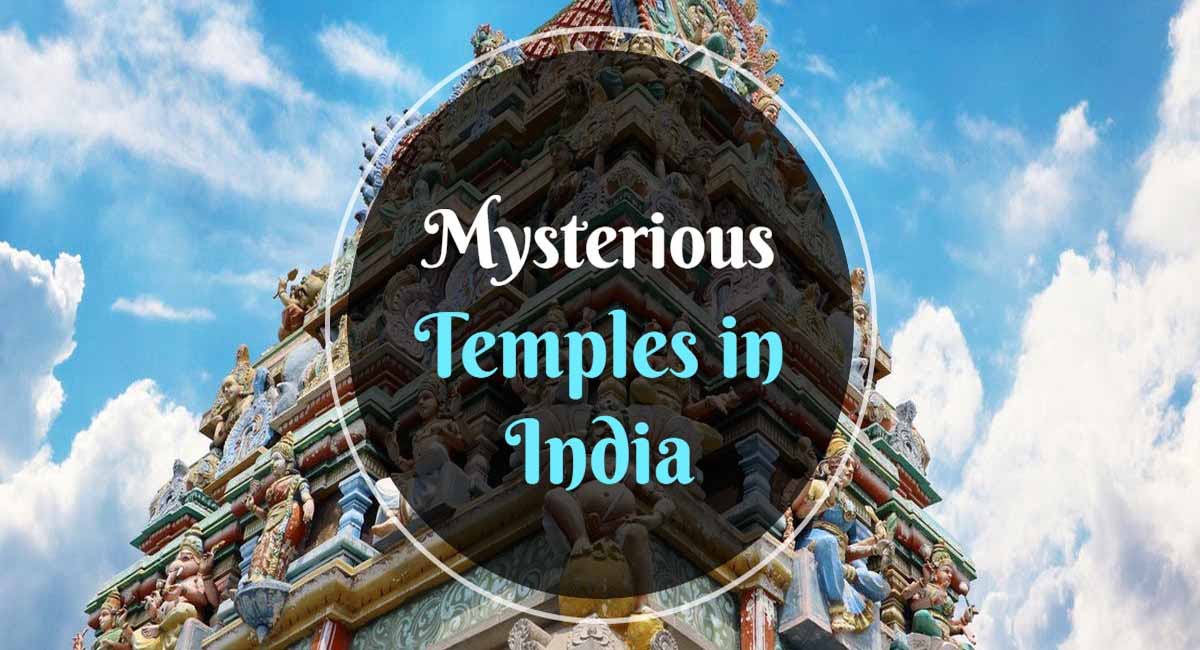India is known for its diverse and ancient culture, and temples are an integral part of it. Among the countless temples in India, some are shrouded in mystery and have captured the attention of people worldwide. These temples have unique architectural features, intriguing histories, and enigmatic legends associated with them. Here are the top 10 mysterious temples in India that are worth exploring.
Brief Overview
The article will cover the top 10 mysterious temples in India. These temples have unique architectural features, intriguing histories, and enigmatic legends associated with them. The ten temples are the Sun Temple in Konark, Brihadeeswarar Temple in Thanjavur, Kailasa Temple in Ellora Caves, Padmanabhaswamy Temple in Thiruvananthapuram, Meenakshi Amman Temple in Madurai, Lingaraj Temple in Bhubaneswar, Jwala Ji Temple in Kangra, Karni Mata Temple in Rajasthan, Mahakaleshwar Temple in Ujjain, and Chausath Yogini Temple in Morena. Each temple has a distinct mystery and allure, making them worth exploring for those interested in India’s rich culture and history.
Explanation of the Importance of Temples in India
Temples play a vital role in Indian culture and are an integral part of the country’s history and heritage. They are considered sacred places of worship, where devotees come to seek blessings from the divine. Temples are also important cultural centers that showcase the country’s diverse and rich cultural traditions, including art, music, and dance.
Indian temples are often architectural marvels that reflect the unique style and artistry of the region where they are located. Many of these temples have been constructed over centuries, and their design and construction are steeped in ancient knowledge and practices.
In addition to being centers of worship and cultural heritage, temples also serve as social and community centers. They provide a platform for people to come together and celebrate festivals and events, such as Diwali, Holi, and Navratri.
Overall, temples hold immense significance in Indian culture and society, and their importance cannot be overstated. They represent the deep-rooted spiritual and cultural traditions of India, and their architectural beauty and intricate designs have captured the imagination of people worldwide.
Why Some Temples are Mysterious
Some temples in India are shrouded in mystery due to their unique architectural features, historical significance, and enigmatic legends. Many of these temples have been constructed in remote locations or in difficult terrain, adding to their mysterious allure.
Some temples have legends associated with them that have been passed down through generations. These legends often involve miraculous events, supernatural occurrences, or divine interventions that are difficult to explain logically. Such stories have contributed to the mystique surrounding these temples.
Additionally, some temples have intricate and complex architectural designs that are difficult to comprehend. Many of these designs are unique to the temple and are not found anywhere else in the world. The intricate carvings, hidden passages, and secret chambers have piqued the interest of researchers, historians, and visitors alike.
Furthermore, some temples have remained unexplored due to their remote location, and their full extent and history remain shrouded in mystery. The lack of information about these temples has led to rumors and legends that add to their mysterious appeal.
Overall, the mystery surrounding some Indian temples has captured the imagination of people worldwide and made them popular tourist destinations for those seeking to explore India’s rich cultural and architectural heritage.
The Sun Temple, Konark
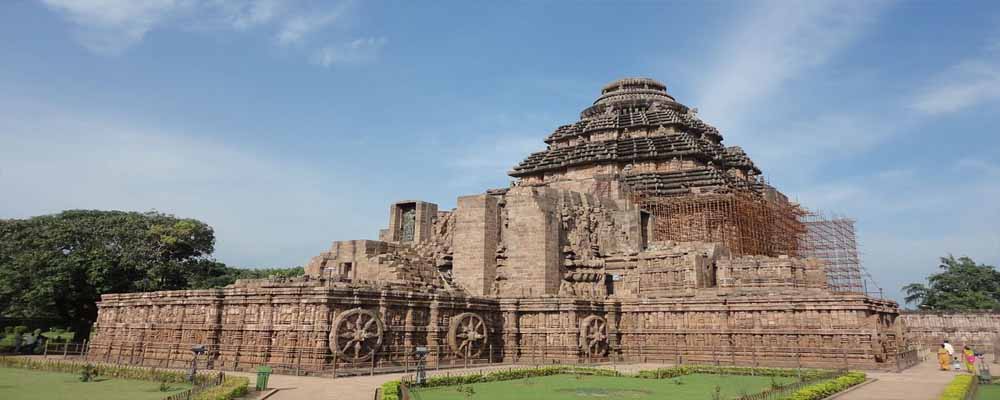
The Sun Temple in Konark is a UNESCO World Heritage Site located in the eastern Indian state of Odisha. The temple was built in the 13th century by King Narasimhadeva I of the Eastern Ganga Dynasty and is dedicated to the Hindu Sun God, Surya.
Introduction to the Temple’s History and Architecture
The temple’s architecture is a marvel of ancient Indian engineering and is famous for its intricate carvings and sculptures. The temple is designed in the form of a chariot with twelve pairs of carved stone wheels, pulled by seven horses. The temple is also adorned with intricate carvings of animals, mythological figures, and scenes from everyday life.
Description of the Temple’s Unique Features
One of the unique features of the temple is that it was designed to align with the movement of the sun, with the main entrance facing east. The temple’s walls are decorated with erotic carvings, which are believed to have been added later to the temple’s design.
Legend and Mystery Surrounding the Temple
The Sun Temple in Konark is shrouded in mystery and legend. According to one legend, the temple’s construction was halted mid-way, and the temple was never completed. Another legend states that the temple’s magnetism was so strong that it caused ships to wreck on the nearby shore.
Tourist Attractions Near the Temple
The temple is a popular tourist destination and is surrounded by several attractions, including the Chandrabhaga beach and the Konark Museum, which showcases the temple’s history and architecture.
The Brihadeeswarar Temple, Thanjavur
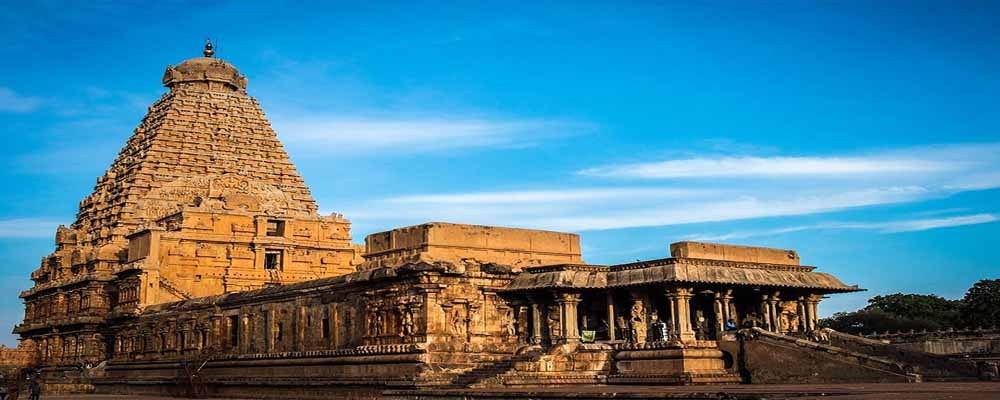
The Brihadeeswarar Temple, also known as the Peruvudaiyar Kovil, is a Hindu temple located in Thanjavur, a city in the southern Indian state of Tamil Nadu. The temple was built in the 11th century by King Raja Raja Chola I and is dedicated to Lord Shiva.
Introduction to the Temple’s History and Architecture
The temple’s architecture is a marvel of ancient Indian engineering and is renowned for its intricate carvings and sculptures. The temple’s towering vimana, or tower, stands at 66 meters tall and is one of the tallest in the world. The vimana is also adorned with intricate carvings of gods, goddesses, and mythical creatures.
Description of the Temple’s Unique Features
One of the unique features of the temple is its central sanctum, which houses a massive lingam, or phallic symbol of Lord Shiva, made of black granite. The sanctum is also adorned with intricate carvings and sculptures.
Legend and Mystery Surrounding the Temple
The Brihadeeswarar Temple is steeped in legend and mystery. According to legend, the temple’s architect, Raja Raja Perumthachan, was blinded by the king to prevent him from building another temple that would rival the Brihadeeswarar Temple’s beauty. Additionally, it is believed that the temple’s massive lingam was placed in the sanctum before the temple was constructed.
Significance of the Temple for Hindus
The temple holds immense significance for Hindus and is one of the most important Shiva temples in India. It is also believed to be a source of spiritual energy and is visited by thousands of devotees every year.
Tourist Attractions Near the Temple
The Brihadeeswarar Temple is surrounded by several tourist attractions, including the Thanjavur Royal Palace and Art Gallery, which showcases the city’s rich cultural and artistic heritage.
Overall, the Brihadeeswarar Temple is a testament to India’s rich cultural and architectural heritage and remains a popular destination for tourists and devotees alike.
The Kailasa Temple, Ellora Caves
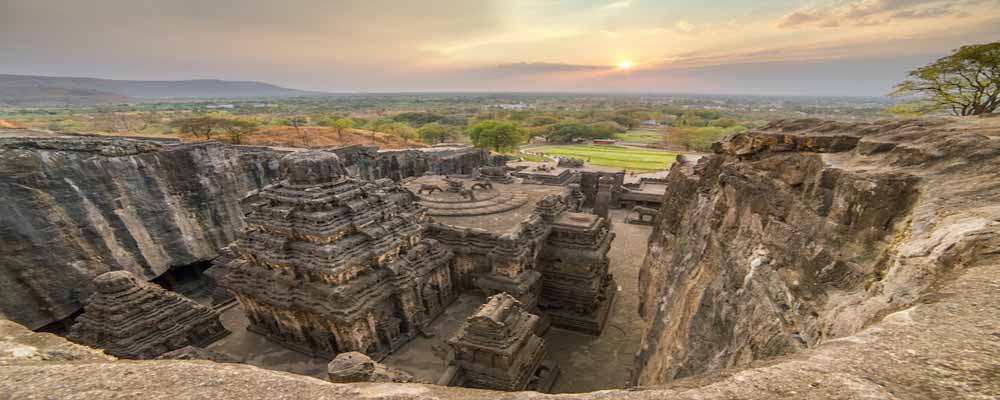
The Kailasa Temple is a temple located in the Ellora Caves, a UNESCO World Heritage Site in the western Indian state of Maharashtra. The temple was built in the 8th century by King Krishna I of the Rashtrakuta dynasty and is dedicated to Lord Shiva.
Introduction to the Temple’s History and Architecture
The Kailasa Temple is renowned for its massive size and intricate carvings. The temple is carved out of a single rock and stands 32 meters tall and 50 meters wide. The temple’s interior is adorned with intricate carvings of gods, goddesses, and mythical creatures.
Description of the Temple’s Unique Features
One of the unique features of the temple is its design, which resembles Mount Kailash, the abode of Lord Shiva. The temple’s architecture and engineering have baffled historians and architects for centuries, as the temple was carved out of a single rock with rudimentary tools.
Legend and Mystery Surrounding the Temple
The Kailasa Temple is steeped in legend and mystery. According to legend, the temple was built in a single night by Lord Shiva, using his divine powers. Additionally, it is believed that the temple’s massive size and intricate carvings were achieved with the help of divine beings.
Explanation of the Temple’s Relevance to Hinduism and Jainism
The Kailasa Temple holds immense significance for both Hindus and Jains. The temple’s design and architecture reflect Hindu mythology and symbolism, while the temple’s proximity to other Jain temples in the Ellora Caves suggests that the temple may have been a site of religious harmony between the two faiths.
Tourist Attractions Near the Temple
The Ellora Caves are surrounded by several tourist attractions, including the Bibi Ka Maqbara, a mausoleum that resembles the Taj Mahal and was built in the 17th century.
Overall, the Kailasa Temple is a marvel of ancient Indian engineering and architecture and remains a popular destination for tourists and history enthusiasts alike.
The Padmanabhaswamy Temple, Thiruvananthapuram
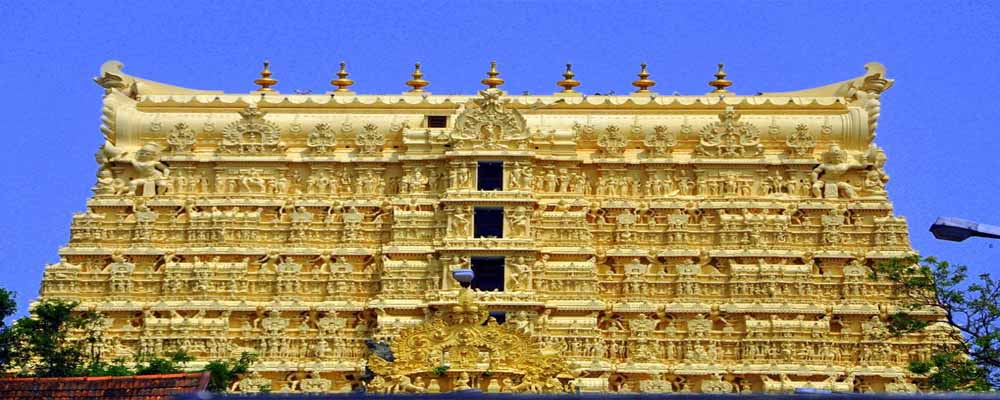
The Padmanabhaswamy Temple is a Hindu temple located in the city of Thiruvananthapuram, the capital of the southern Indian state of Kerala. The temple is dedicated to Lord Vishnu and is known for its unique architecture and rich history.
Introduction to the Temple’s History and Architecture
The temple’s architecture is a blend of Dravidian and Kerala styles, with the main shrine located in a rectangular-shaped structure made of stone. The temple’s unique feature is the massive idol of Lord Vishnu reclining on the serpent Anantha, which is made of a rare combination of materials including granite and gold.
Description of the Temple’s Unique Features
The Padmanabhaswamy Temple is steeped in legend and mystery, with several stories surrounding its origin and significance. According to one legend, the temple was built by the divine architect Vishwakarma, while another story suggests that the temple was constructed by the Chola king Anantavarman.
Legend and Mystery Surrounding the Temple
The temple has been surrounded by controversy in recent years due to the discovery of a vast amount of wealth in its vaults. The temple’s vaults contain treasures worth billions of dollars, including gold, diamonds, and precious stones. The wealth has led to several legal battles over its ownership and management.
Tourist Attractions Near the Temple
Apart from the temple itself, the surrounding area is home to several tourist attractions, including the Napier Museum and Zoo, which is located nearby. The city of Thiruvananthapuram is also known for its beaches and backwaters, which attract tourists from all over the world.
Discussion of the Temple’s Wealth and Controversies Surrounding it
The Padmanabhaswamy Temple in Thiruvananthapuram, Kerala is known for its wealth, including a vast treasure trove of gold, silver, and precious stones estimated to be worth billions of dollars. The temple’s wealth has been the subject of controversy and legal battles over ownership and management, with some arguing that it should belong to the state or central government. The temple’s security and management have also been questioned, and there are concerns that the focus on its wealth could overshadow its cultural and religious significance.
The Meenakshi Amman Temple, Madurai
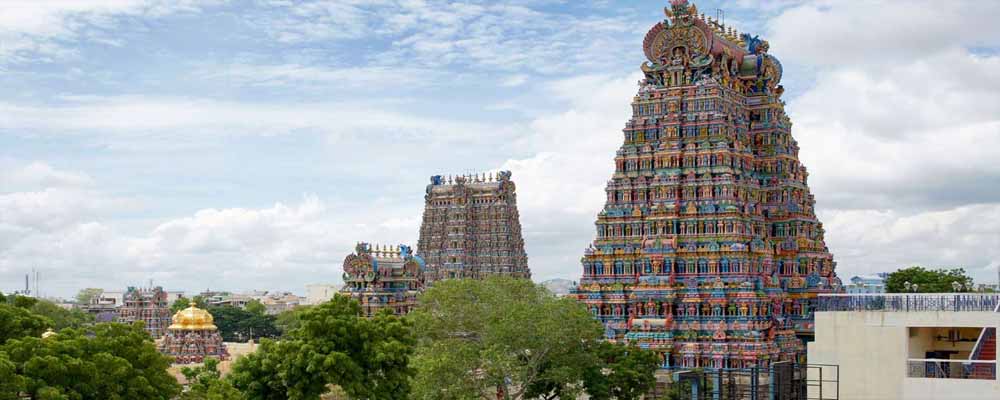
The Meenakshi Amman Temple in Madurai, Tamil Nadu is a famous Hindu temple known for its stunning architecture and rich history.
Introduction to the Temple’s History and Architecture
The temple’s unique features include its towering gopurams (towers) adorned with intricate carvings depicting scenes from Hindu mythology. The temple also features several halls and shrines dedicated to various deities, including Meenakshi Amman (a form of the goddess Parvati) and her consort, Sundareswarar (a form of Lord Shiva).
Legend and Mystery Surrounding the Temple
According to legend, the temple was built around a sacred fire that emerged from the ground, and it has since been expanded and renovated by various kings and rulers over the centuries.
Significance of The Temple for Hindus
The temple holds great significance for Hindus, who believe that worshipping at the temple can bring blessings and fulfill their wishes.
Tourist Attractions Near the Temple
Tourist attractions near the temple include the nearby Thirumalai Nayak Palace, which was built in the 17th century, and the Gandhi Memorial Museum, which showcases the life and legacy of Mahatma Gandhi.
The Lingaraj Temple, Bhubaneswar
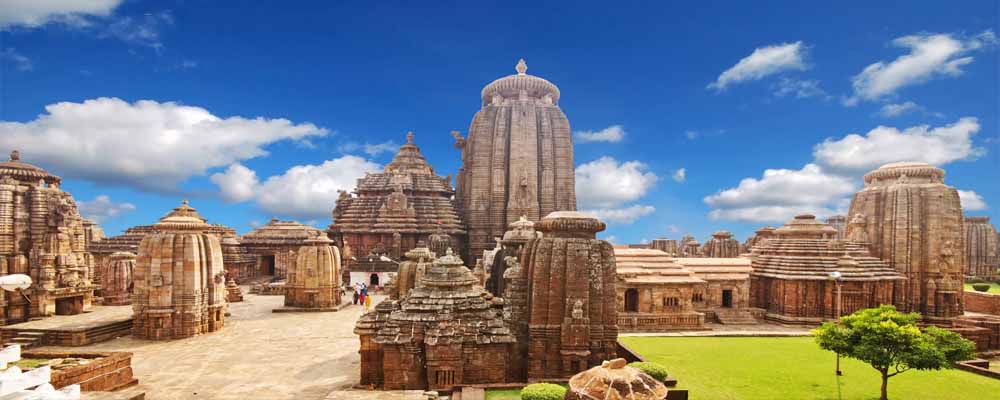
The Lingaraj Temple in Bhubaneswar, Odisha is a highly revered Hindu temple dedicated to Lord Shiva. The temple’s history dates back to the 11th century when it was built by the rulers of the Eastern Ganga dynasty.
Description of the Temple’s Unique Features
The temple’s unique features include its massive spire (vimana) and the stone-carved sculptures of various deities and mythical creatures that adorn the temple’s exterior. The temple’s interior features a sanctum sanctorum where the main lingam (an abstract representation of Lord Shiva) is housed, along with several other smaller shrines dedicated to different deities.
Legend and Mystery Surrounding the Temple
Legend has it that the temple was built over a sacred underground water tank, and that the water in the tank never dries up, regardless of the season. The temple’s architecture and intricate carvings are also a source of mystery, as they are said to have been carved by skilled artisans who worked only at night.
Significance of the Temple for Hindus
The Lingaraj Temple is of great significance for Hindus, who believe that offering prayers and performing rituals at the temple can help alleviate their troubles and fulfill their desires.
Tourist Tttractions Near the Temple
Tourist attractions near the temple include the nearby Mukteswara Temple, which is another famous Hindu temple known for its intricate carvings, and the Khandagiri and Udayagiri Caves, which are ancient Jain rock-cut caves with intricate carvings and inscriptions.
The Jwala Ji Temple, Kangra
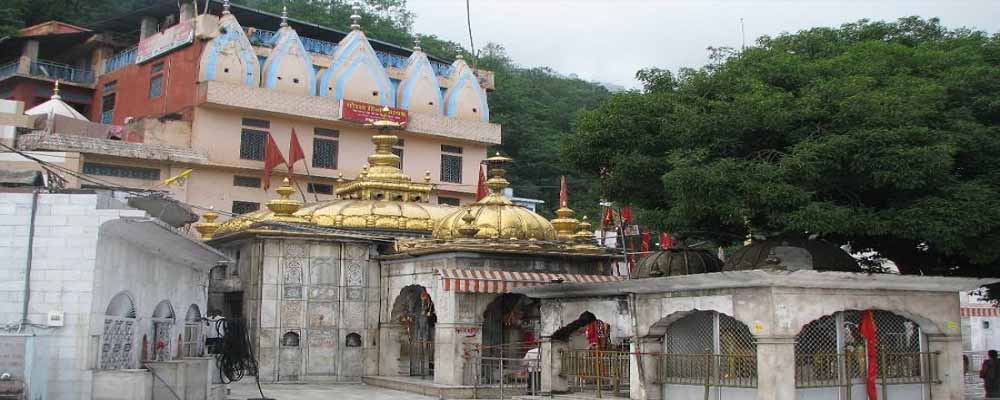
The Jwala Ji Temple is a famous Hindu temple located in Kangra, Himachal Pradesh. It is dedicated to the goddess Jwala Devi, who is believed to be a manifestation of the Hindu goddess of power, Durga. The temple’s unique feature is its eternal flame, which has been burning for centuries without any visible source of fuel. The temple’s history dates back to the 9th century, and it has undergone several renovations and additions over time.
Description of the Temple’s Unique Features
One of the temple’s unique features is the eternal flame that burns continuously from the rock, which is said to be a manifestation of the Goddess. There are several smaller flames around the main flame, which are also worshipped by devotees. The temple also has a large brass bell and a sacred pond.
Legend and Mystery Surrounding the Temple
Legend has it that the tongue of Sati, the first wife of Lord Shiva, fell at this spot after her death, and the temple was built around the sacred site. The temple’s flame is believed to be the manifestation of her power, and it is a significant pilgrimage site for Hindus. It is also revered by Sikhs, who believe that Guru Hargobind, the sixth guru of the Sikhs, visited the temple in the 17th century.
Explanation of the Temple’s Significance for Hindus and Sikhs
The Jwala Ji Temple is significant for both Hindus and Sikhs, and it is believed to be one of the 51 Shakti Peethas, or sacred sites dedicated to the Goddess. It is also considered a holy site for Sikhs, as Guru Gobind Singh, the tenth Sikh guru, is said to have visited the temple.
Tourist Attractions Near the Temple
Nearby tourist attractions include the Kangra Fort, the Masroor Rock Cut Temple, and the Brajeshwari Devi Temple.
The Jwala Ji Temple is a unique and sacred site, and a must-visit for those interested in exploring India’s rich religious and cultural heritage.
The Karni Mata Temple, Rajasthan
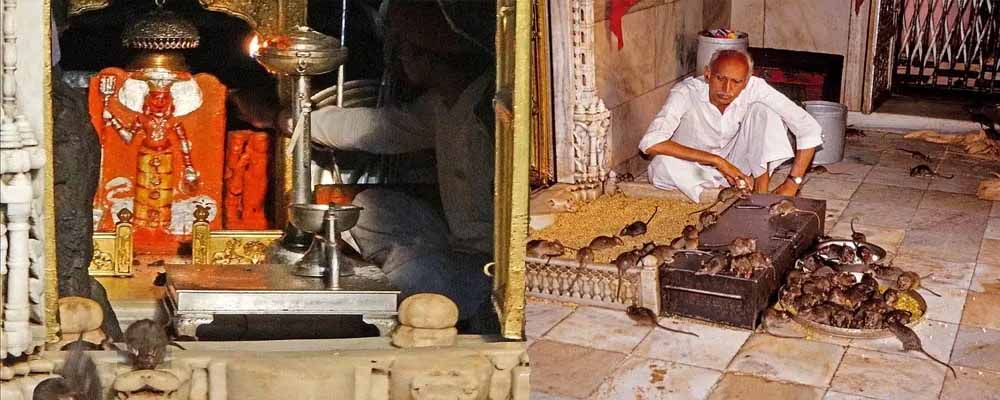
The Karni Mata Temple, also known as the Temple of Rats, is located in Deshnok, Rajasthan. This temple is dedicated to Karni Mata, a Hindu sage who is believed to be an incarnation of Goddess Durga. Here are some key points about the temple:
Introduction to the Temple’s History and Architecture
The temple was built in the early 20th century by Maharaja Ganga Singh of Bikaner. The architecture of the temple is a mix of Mughal and Rajput styles.
Description of the Temple’s Unique Features
The temple is known for the large population of rats that live there. It is believed that these rats are the reincarnated descendants of Karni Mata’s family members and are considered sacred.
Legend and Mystery Surrounding the Temple
One of the most popular legends surrounding the temple is that if a rat runs over your feet, it is considered to be a blessing from Karni Mata. Additionally, the rats are said to bring good luck and prosperity to those who visit the temple.
Tourist Attractions Near the Temple
The city of Bikaner, which is located near the temple, is home to several other tourist attractions. Some of these include the Junagarh Fort, the Gajner Palace, and the Lalgarh Palace.
Discussion of the Temple’s Connection to Rats and their Significance
The rats in the temple are considered to be sacred and are fed and cared for by the temple’s priests and visitors. It is believed that if one of the rats dies, it must be replaced with a rat made of solid gold or silver. The temple and its rats attract thousands of visitors each year.
The Mahakaleshwar Temple, Ujjain
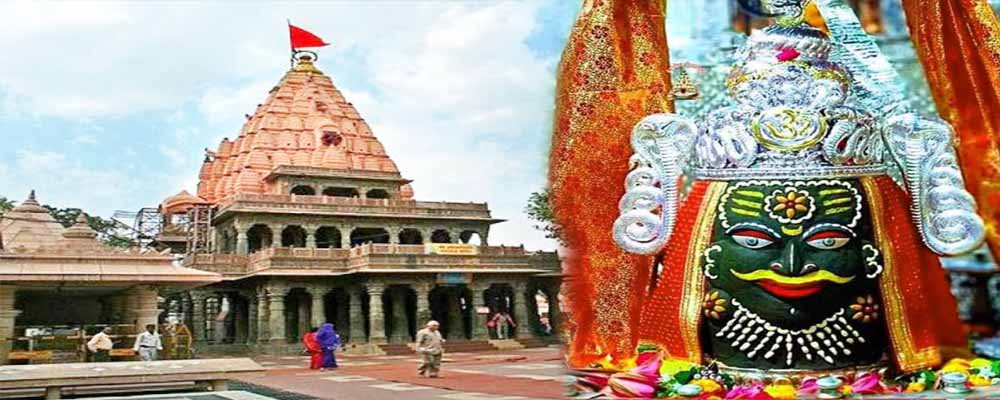
The Mahakaleshwar Temple is one of the most famous and ancient temples in India, located in Ujjain, Madhya Pradesh. It is dedicated to Lord Shiva and is considered one of the 12 Jyotirlingas in India.
Introduction to the Temple’s History and Architecture
The temple is believed to have been constructed during the 4th to 5th century BC by the Mauryan Empire. It was later renovated during the Gupta dynasty and the Paramara dynasty. The temple’s architecture is a mix of Rajput and Maratha styles, with intricate carvings and sculptures.
Description of the Temple’s Unique Features
The Mahakaleshwar Temple is known for its unique architecture, with its five-tiered shikhara or spire, which is adorned with sculptural beauty. It also has a massive entrance gate, which is made of silver and has images of Lord Ganesha and other gods and goddesses.
Legend and Mystery Surrounding the Temple
According to Hindu mythology, the temple is believed to be the spot where Lord Shiva appeared in the form of a lingam, or a pillar of light. The lingam is said to have emerged on its own, and the temple was built around it.
Significance of the Temple for Hindus
The Mahakaleshwar Temple is considered one of the most sacred temples for Hindus, particularly worshippers of Lord Shiva. It is believed that a visit to the temple can help one attain moksha, or liberation from the cycle of birth and death.
Tourist Attractions Near the Temple
Ujjain is a historical city with several other important temples and tourist attractions nearby. The Kal Bhairav Temple, Chintaman Ganesh Temple, and Harsiddhi Temple are all within a few kilometers of the Mahakaleshwar Temple. The city is also home to several ancient monuments and structures, including the Kaliadeh Palace, Vikramaditya’s throne, and the Vedha Shala Observatory.
The Chausath Yogini Temple, Morena
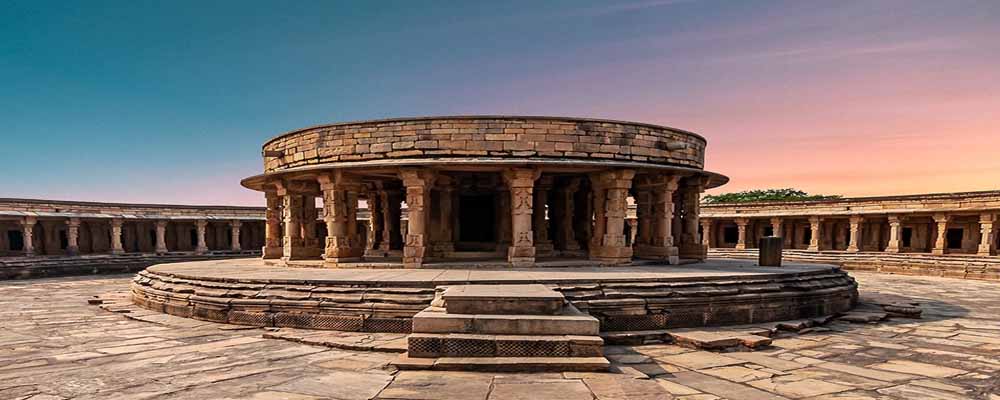
The Chausath Yogini Temple is an ancient temple located in the Morena district of Madhya Pradesh. It is a circular temple dedicated to the 64 goddesses or yoginis, who are considered to be a form of the Hindu goddess Durga.
History and Architecture
The temple was built in the 9th century by the Kachchhapaghata dynasty. It is believed to have been built on a site of great spiritual significance, possibly an ancient ashram. The temple is unique in its circular design and is made entirely of sandstone.
Unique Features
The temple is a circular structure with 64 chambers, each containing the idol of a yogini. The circular wall has 56 niches, which are believed to have contained the idols of the other eight yoginis. The temple has a central courtyard, which was used for spiritual practices and rituals.
Legend and Mystery
Legend has it that the temple was built by a king who was a great devotee of the goddess Durga. It is said that the yoginis appeared to him in a dream and instructed him to build the temple in their honor. The temple is also associated with the practice of black magic and witchcraft.
Tourist Attractions
The Chausath Yogini Temple is located near the city of Gwalior, which is known for its rich cultural heritage. Tourists can visit the nearby Gwalior Fort, which is a UNESCO World Heritage Site, and the Jai Vilas Palace, which is a popular tourist attraction.
Connection to Black Magic and Witchcraft
The temple’s association with black magic and witchcraft is a matter of debate. Some believe that the temple was a center for the practice of black magic, while others argue that it was a center for the study of the occult and spiritual practices. The temple is said to have been a place where practitioners of black magic and witchcraft would come to seek the blessings of the yoginis and to perform rituals to harness their power. However, these practices are not condoned by mainstream Hinduism, and the temple authorities deny any association with such practices.
Conclusion
India is known for its rich cultural heritage and unique architectural wonders. The top 10 mysterious temples in India are a testament to this legacy. These temples are not only important religious sites, but they also hold great historical and cultural significance.
Recap of the top 10 Mysterious Temples in India
The Sun Temple in Konark, the Brihadeeswarar Temple in Thanjavur, and the Kailasa Temple in Ellora Caves are stunning examples of ancient Indian architecture and engineering. The Padmanabhaswamy Temple in Thiruvananthapuram is famous for its immense wealth, while the Meenakshi Amman Temple in Madurai is renowned for its elaborate carvings and intricate designs. The Lingaraj Temple in Bhubaneswar, the Karni Mata Temple in Rajasthan, the Mahakaleshwar Temple in Ujjain, and the Chausath Yogini Temple in Morena all have their unique histories, legends, and mysterious features that continue to captivate visitors.
Explanation of the Importance of these Temples for India’s Cultural Heritage
These temples are not just religious sites, but they also represent the cultural and historical heritage of India. They serve as a reminder of the country’s rich past and are a source of inspiration for its future. Visiting these temples is a must for anyone interested in Indian history, culture, and spirituality. It is an unforgettable experience that will leave a lasting impression on visitors.
Suggestion to Visit these Temples for an Unforgettable Experience
The top 10 mysterious temples in India are a testament to the country’s rich cultural heritage and unique architectural wonders. They hold great historical and cultural significance, and their legends and mysteries continue to fascinate visitors. These temples are not just religious sites, but they are also an important part of India’s cultural legacy that should be appreciated and preserved for future generations.
FAQs
What is the significance of these temples for India’s cultural heritage?
These temples are important for India’s cultural heritage as they represent the country’s rich history, art, and architecture, as well as the spiritual and religious beliefs of its people.
What tourist attractions are near these temples?
There are several tourist attractions near these temples, such as natural wonders, historical sites, and cultural landmarks.
Can visitors enter these temples?
Yes, visitors can enter most of these temples, but they may need to follow specific rules and regulations, such as removing shoes, covering their heads, and not taking photographs in certain areas.
